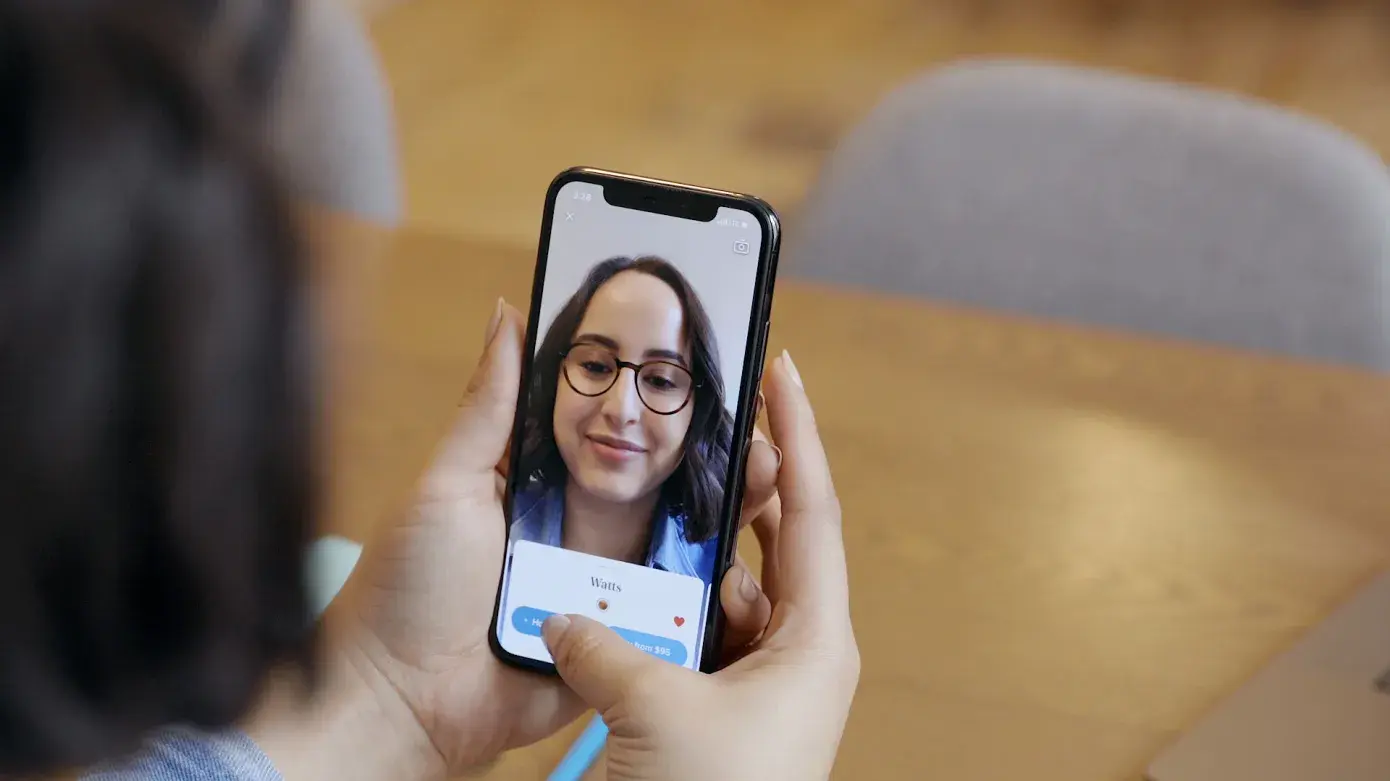Your Full Guide On Virtual Reality For E-commerce (With Examples To Inspire You)
If you remember the game Pokemon Go, we are glad to tell you that you belong to the golden generation. Ever since this game took place, the world has flipped due to such a massive technological advancement.
Years later, we are here to tell you that the technology used in Pokemon Go is virtual reality. The good news is it’s also here to shift the field of e-commerce with its advancements.
Virtual Reality (VR) is a simulation of a 3D environment that enables users to immerse in a virtual world similar to a realistic one.
It has been noticed that the terms Virtual Reality (VR) and Augmented Reality (AR) are usually used interchangeably. Yet, both terms vary significantly.
In VR, users rely on headsets to be part of a virtual, computer-generated environment. In contrast, AR uses digital images and places them in the real world around you.
For instance, you can imagine seeing a virtual Sofa in your living room by using AR. In comparison, VR allows you to fully experience inside the furniture store to view and examine products without leaving your living room.
Accordingly, VR is reshaping customers' journeys and transforming the realm of online shopping. Hence, in this article, we will delve into the vital role of Virtual reality in e-commerce, its uses, and some examples of businesses leveraging it.
Don’t miss out on what’s coming next.
Table Of Content
- Statistics on Virtual Reality For E-commerce
- Cases For Using Virtual Reality For E-commerce
- Examples
Statistics on Virtual Reality For E-commerce
Let’s warm up with some numbers and statistics on virtual reality in e-commerce.
- A study (WebinarCare,2024) showed that global spending on VR and AR is anticipated to reach 72.8 billion dollars by 2024.
- As for customers, 71% perceive brands that use VR as forward-thinking.
- Around 37% of US consumers expressed their need for VR in their online shopping experience, according to Statista (2023).
- 70% of shoppers mentioned that they would be more loyal to brands that provide AR and VR experiences (ZDNet, 2021).
- The VR market is expected to grow at a compound Annual Growth Rate (CAGR) of 27.5% from 2023 to 2030 (Grand View Research, 2021).
- A Study conducted in 2020 showed that 91% of business organizations are already using or planning to use VR and AR technology.
Cases For Using Virtual Reality For E-commerce
As a way to get over the obstacles facing online shoppers and to provide them with a more engaging and interactive experience, online stores started to incorporate VR in different ways along the buyer’s journey. So, we will break down the cases in which VR can be used in e-commerce.
1- Virtual Showrooms
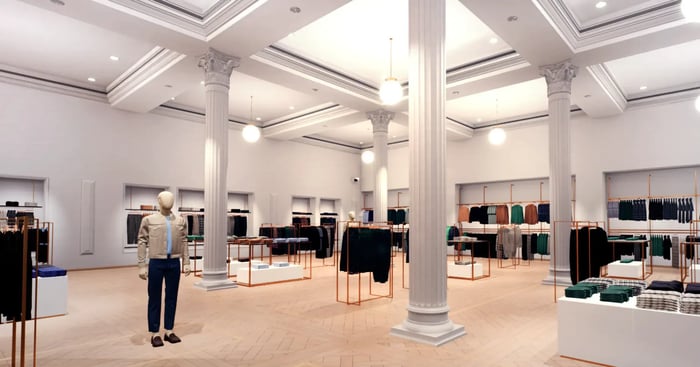
First things first, VR for e-commerce can be used to create virtual showrooms. To understand this case more, let’s imagine a situation in which a buyer goes to the mall to visit a showroom and to see the storefront for suitable products.
Well, we are here to tell you that such an experience can be delivered precisely through virtual reality. Thus, it delivers the same realistic experience as if you visited an online store but from the comfort of your home.
Accordingly, incorporating VR delivers an immersive shopping experience that is unavailable in the online shopping experience.
2- Live Events
At times, online businesses need to host events to create a bond with customers and increase engagement. However, they encounter an issue of finding a suitable venue and timing to fit all of their customers dispersed in different physical locations.
As a solution, VR is used in hosting live brand events, product launches, fashion shows, or store pop-ups. This delivers a realistic customer experience but without physical interaction.
Hence, live events contribute to cultivating a strong brand community, which is crucial for all online businesses.
3- Interactive Education
Another case for using VR in e-commerce is to deliver an interactive education experience. This is mostly suitable if you are offering a sophisticated product that needs a manual to be used.
Thus, you can rely on VR to deliver a detailed informative experience to buyers and how to use your products. This builds more confidence and trust for your brand.
4- Virtual Fitting Rooms
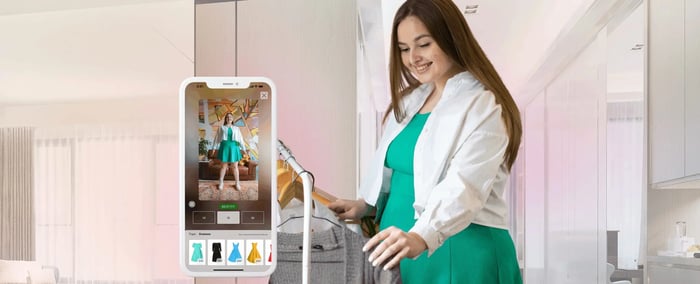
The continuous technological advancements never fail to blow our minds. With virtual reality in e-commerce, online shoppers have virtual fitting rooms in which they can try the chosen items before placing an order. Hence, it removes any doubts and leaves no place for surprises upon delivery.
Such a feature will revolutionize the online shopping experience. It addresses a focal point that faces online shoppers, which is the unavailability of try-ons which creates an issue, especially with the strict return and exchange policies.
As a result, VR comes to the rescue by solving one of the main issues in online shopping. Instead of just reading robotic product descriptions, buyers get the chance to try products and assess how they fit for an enhanced customer experience and accelerated interaction.
5- Virtual Customer Support
VR didn’t leave room for any obstacles in customers’ journey. Therefore, to provide an immersive customer support experience, virtual reality provides customers with an interactive experience with service representatives in a virtual environment. This facilitates efficient problem-solving and troubleshooting to solve buyers’ issues promptly.
Examples Of Using VR in E-commerce
-
Alibaba Buy+

Alibaba, the e-commerce giant, embarked on the advanced technology of VR by establishing Alibaba Buy+.
Through Alibaba Buy+, the company upgrades its customers’ shopping experience by immersing them in a virtual environment in which buyers get to view, touch, and even try their products. Such an experience is done by using a VR headset.
Accordingly, with Alibaba Buy+, shoppers can enjoy a virtual shopping experience like in physical stores.
The Alibaba Buy+ has taken place as a trial in China. Yet, the billion-dollar company believes that the presence of VR in e-commerce is just a matter of time ( And we can’t agree more).
-
Sephora
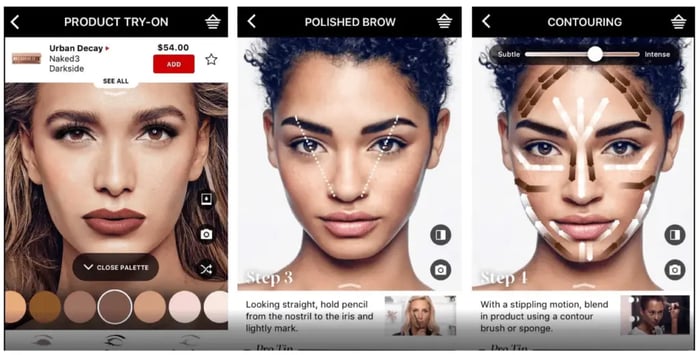
Sephora has announced that they are bringing virtual reality technology to the beauty industry. And we couldn’t be more impressed with Sephora’s announcement and how they are shaping online shopping for beauty products.
With Sephora’s virtual assistant and its face recognition feature, shoppers can try different products to evaluate the most suitable ones. Trust us, identifying the correct lipstick shade is a huge hassle for all women. Hence, such a feature is a savior for all female shoppers.
Additionally, Sephora has created virtual reality tutorials in which users are part of a virtual environment with a virtual makeup artist who takes them through every step of the makeup process.
Thus, the features offered by Sephora raise the bar for interaction and engagement in the online makeup industry.
-
Puma
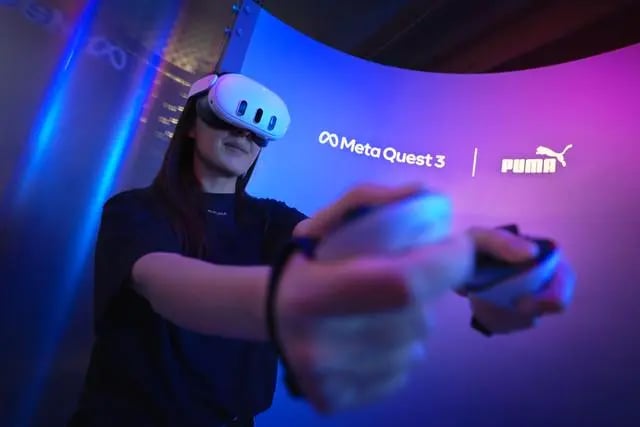
Puma embraced virtual reality for e-commerce to transform the way customers shop for its products.
It created its mobile app, which incorporates a virtual try-on feature for its buyers. Accordingly, shoppers get the chance to see products in 3D animations. Hence, the shopping experience becomes a more engaging, interactive, and efficient one.
Another way Puma has been leading the way in VR is by launching its so-called virtual influencer. Maya, the virtual influencer, is the new tactic Puma has been using to take over the world of virtual reality.
The character, Maya, has social media accounts that she uses to promote Puma products and to collaborate with celebrities. Such a tactic is perceived by Puma as a more interesting, interactive, and appealing way to reach out to customers, which is required at the time.
To raise the bar even more, Puma has collaborated with Meta Quest 3 to create the world’s smallest gyms. By wearing the VR headset Meta Quest 3, users can exercise while wearing Puma products. Hence, it delivers an immersive training opportunity from any place you desire.
-
Ikea

Ikea never fails to hop on the technological advancements taking place in the industry, and VR for e-commerce is no exception.
Ikea created its virtual store/showroom in which customers can view products and make purchases through a simulated 3D environment. Hence, it eliminates any doubts regarding online purchases while at the same time, customers can view the product before buying to make informed purchases.
-
Gucci
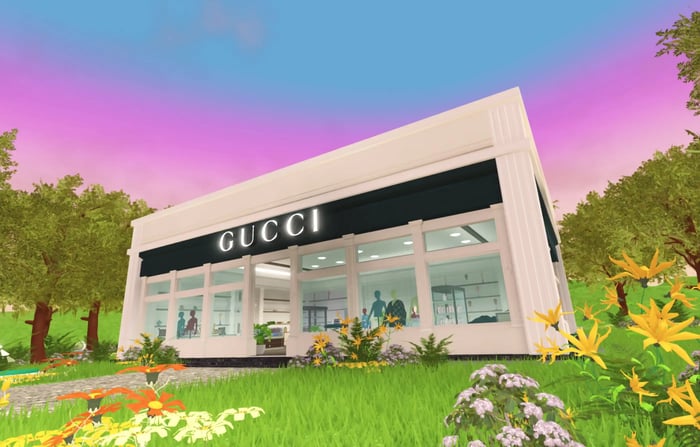
We can’t talk about virtual reality for e-commerce and skip talking about Gucci Town!
Just as it sounds, Gucci Town is a virtual world created by Gucci in collaboration with the Roblox metaverse. The town includes different interactive games and, most importantly, Gucci stores in which users can view and shop for products. In addition, people get the chance to interact with other people in the town.
Also, it created the “Gucci Virtual 25 sneakers” which are available exclusively on its virtual store. It’s worth mentioning that the sneakers are way more expensive than the traditional Gucci sneakers, especially for something that won’t be available in real life.
So, Gucci, with its town, is reaching a customer engagement peak. Also, it was able to surpass various brands by identifying where the fashion industry is heading and, consequently, embarking on its trends.
-
TOMS

TOMS delivers one of the best examples of e-commerce that realizes the importance of giving back to society and of corporate social responsibility. With its policy of giving back one pair of shoes for every sold pair, TOMS was able to build a strong connection with its customers and lead the way with its philanthropic acts.
Yet, to make its customers feel the impact of their contributions, TOMS decided to incorporate VR in its e-commerce to provide us with one of the best examples.
The Walk in Their Shoes campaign takes buyers through a journey of moving to another state to meet the child who benefitted from the free pair of shoes due to his/her purchase. Such a journey is made by using a VR chair that allows buyers to be involved in such a captivating experience.
The way TOMS used virtual reality in its e-commerce caught us off guard in the best way possible. They created a very strong connection with customers, created empathy, and built brand trust and credibility.
Let’s Immerse Into The World Of Virtual Reality
Virtual Reality is taking the e-commerce landscape by storm. This arises from its ability to solve pressing problems that face online shoppers, mainly the absence of interaction.
So, to stand out among the fierce competition in e-commerce, you have to commence on such a technology to maximize your revenues and surpass competitors.
However, keeping up with the technological advancements in the industry doesn’t mean ignoring the staples. This includes email marketing, automated ads, auto-segmentation, and personalization.
All of these services and more are available with Convertedin.
Convertedin is one of the best marketing automation tools that will transform the performance of your e-commerce. It uses data and customers’ insights to create personalized multi-channel marketing campaigns that maximize ROI and accelerate customer engagement.
So, the first step to start enjoying these benefits is to book your demo now!
 By
By
